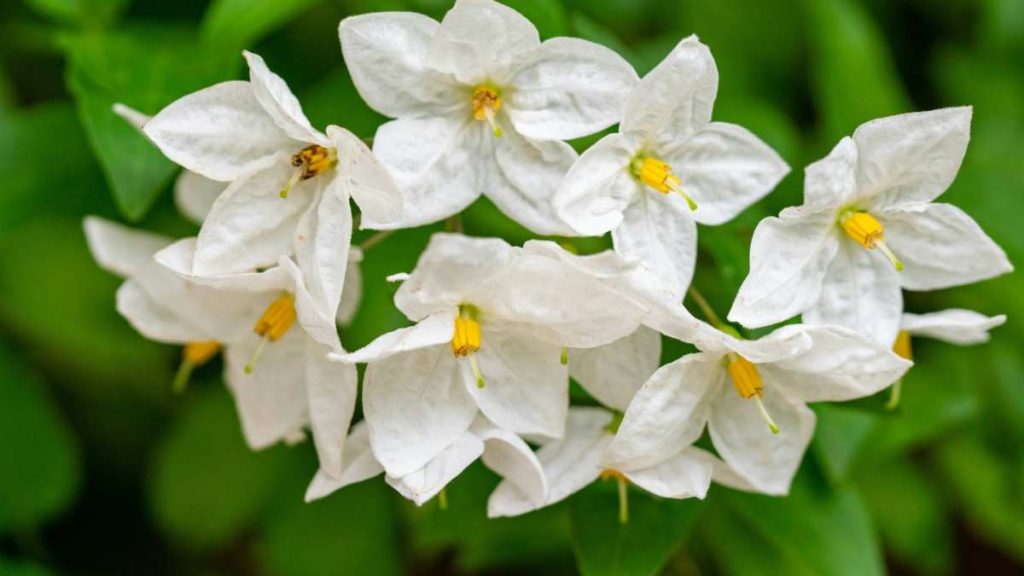If you’re looking to add a burst of color to your garden that blooms as the sun sets, then four o’clock flowers (Mirabilis jalapa) might just be the perfect choice for you. These vibrant, fragrant blooms have become a favorite for gardeners who want to enjoy beautiful flowers in the evening and night hours. Whether you’re a seasoned gardener or just starting out, this blog post will provide all the practical tips and advice you need to grow your own four o’clocks, ensuring that your garden is blooming beautifully from late afternoon through to the night.
What Are Four O’Clock Flowers?
Four o’clock flowers, scientifically known as Mirabilis jalapa, are known for their unique habit of blooming late in the afternoon, typically around 4 PM (hence the name). The flowers come in a variety of vibrant colors like pink, red, yellow, white, and even multi-colored varieties that change shades throughout the day. They are native to Central and South America and have been cultivated for centuries, not only for their beauty but also for their medicinal properties.
These plants are herbaceous perennials that can reach heights of about 1-3 feet, making them perfect for both garden beds and containers. Their fragrance, which becomes more intense in the evening, adds a lovely touch to your garden ambiance, particularly after a long, sunny day.
Why Should You Grow Four O’Clock Flowers?
-
Beautiful Evening Blooms
Unlike most plants that bloom during the day, four o’clocks open their petals in the late afternoon or early evening, making them an excellent choice for evening gardeners who want a late-day burst of color. -
Fragrance
The scent of four o’clock flowers is sweet and intoxicating, especially as the sun begins to set. This makes them a perfect addition near patios or garden benches where you can relax and enjoy the evening air. -
Low Maintenance
These flowers are incredibly easy to grow and maintain, even for beginners. They don’t require much attention but offer plenty of rewards in terms of beauty and fragrance. -
Attract Pollinators
The sweet scent and vibrant colors of four o’clocks attract bees, butterflies, and hummingbirds, helping to create a pollinator-friendly garden.
How to Grow Four O’Clock Flowers: Practical Tips
1. Choose the Right Location
Four o’clock flowers thrive in full sun to partial shade. While they prefer lots of sunlight, they can tolerate some shade, especially in hotter climates. A location with well-drained soil and plenty of space is ideal, as these plants can spread out and grow quite large. Be sure to pick a spot where you can fully enjoy the late afternoon blooms!
2. Planting Four O’Clock Seeds or Transplants
- Seeds: You can start four o’clock flowers from seeds indoors about 6-8 weeks before the last expected frost, or you can sow them directly into the ground once the risk of frost has passed. If starting indoors, plant the seeds in seed trays filled with moist potting soil, and keep them in a warm location. After the seedlings sprout and grow strong enough, transplant them into your garden.
- Transplants: If you prefer a quicker route to blooms, you can purchase young four o’clock plants from a nursery. Simply transplant them into your garden after the frost danger has passed, spacing them about 18-24 inches apart to allow room for growth.
3. Watering and Soil Requirements
Four o’clock flowers prefer well-drained soil, so be sure to plant them in areas where water doesn’t pool. While they are fairly drought-tolerant once established, they do appreciate regular watering, especially during dry spells. However, be careful not to overwater, as this can cause root rot. Water them deeply, but allow the soil to dry out between waterings.
4. Fertilization
You don’t need to fertilize four o’clock flowers heavily. A light feeding with a balanced fertilizer in early spring should be sufficient. If your soil is particularly poor, you can mix in some compost before planting to improve the soil structure and nutrient levels.
5. Pruning and Deadheading
Four o’clock flowers don’t require much pruning, but you can help keep them tidy and encourage more blooms by deadheading spent flowers. Simply pinch or cut off the faded blooms to promote the production of new flowers. In late fall, after the first frost, you can cut the plant back to the ground. They will often return the following season, especially if grown as perennials in mild climates.
Common Issues and Solutions
1. Pests and Diseases
While four o’clocks are generally pest-resistant, they can sometimes fall prey to aphids, spider mites, or whiteflies. If you notice any of these pests, treat them with an insecticidal soap or a natural solution like neem oil. Additionally, keep an eye out for mildew or fungal diseases, especially if the plants are watered too frequently or planted in overly damp conditions.
2. Self-Seeding Behavior
Four o’clocks are prolific self-seeders, meaning they can spread across your garden if left unchecked. While this can be a fun way to get more plants for free, you might want to prevent them from becoming invasive. To avoid this, deadhead flowers regularly or harvest the seed pods before they burst open in late summer or early fall.
Four O’Clock Flowers in Your Garden Design
These flowers are not just a joy to look at; they can also be a great design element in your garden. Here’s how to use them in your landscape:
- Borders and Edges: Four o’clock flowers work well as a border or edging plant due to their compact nature and bright colors.
- Containers: They can be grown in large pots or containers, making them perfect for patios or balconies. The fragrant blooms add a pleasant touch to any outdoor space.
- Mixed Beds: Combine them with other evening-blooming plants like evening primroses or moonflowers for a garden that comes alive at twilight.
Final Thoughts
Four o’clock flowers are a fantastic addition to any garden, bringing color, fragrance, and a bit of evening magic. They are easy to grow, low-maintenance, and will reward you with plenty of beautiful blooms from late afternoon into the evening. Whether you’re growing them in a flower bed, container, or as part of a pollinator-friendly garden, these plants are sure to add charm and joy to your outdoor space.
Ready to brighten your garden with these lovely late-bloomers? Grab some seeds, find the perfect spot, and get ready to enjoy a new kind of garden delight, one that blooms after the sun sets.
Frequently Asked Questions (FAQs)
Q1: What are Four O’Clock flowers?
Four O’Clock flowers, also known as Mirabilis jalapa, are unique blooms that typically open in the late afternoon, around 4 PM, and stay open through the evening.
Q2: Why are they called Four O’Clock flowers?
They’re named after their unusual blooming time, often opening in the late afternoon or early evening, when most other flowers are closing.
Q3: What colors do Four O’Clock flowers come in?
These flowers come in a range of vibrant colors including pink, red, yellow, white, purple, and even multi-colored patterns on a single plant.
Q4: Are Four O’Clock flowers annuals or perennials?
They are tender perennials in warm climates and often grown as annuals in cooler regions. They also self-seed, returning year after year in many gardens.
Q5: How do I grow Four O’Clock flowers?
Plant them in well-draining soil and a sunny spot. They are easy to grow from seeds and require minimal care once established.



